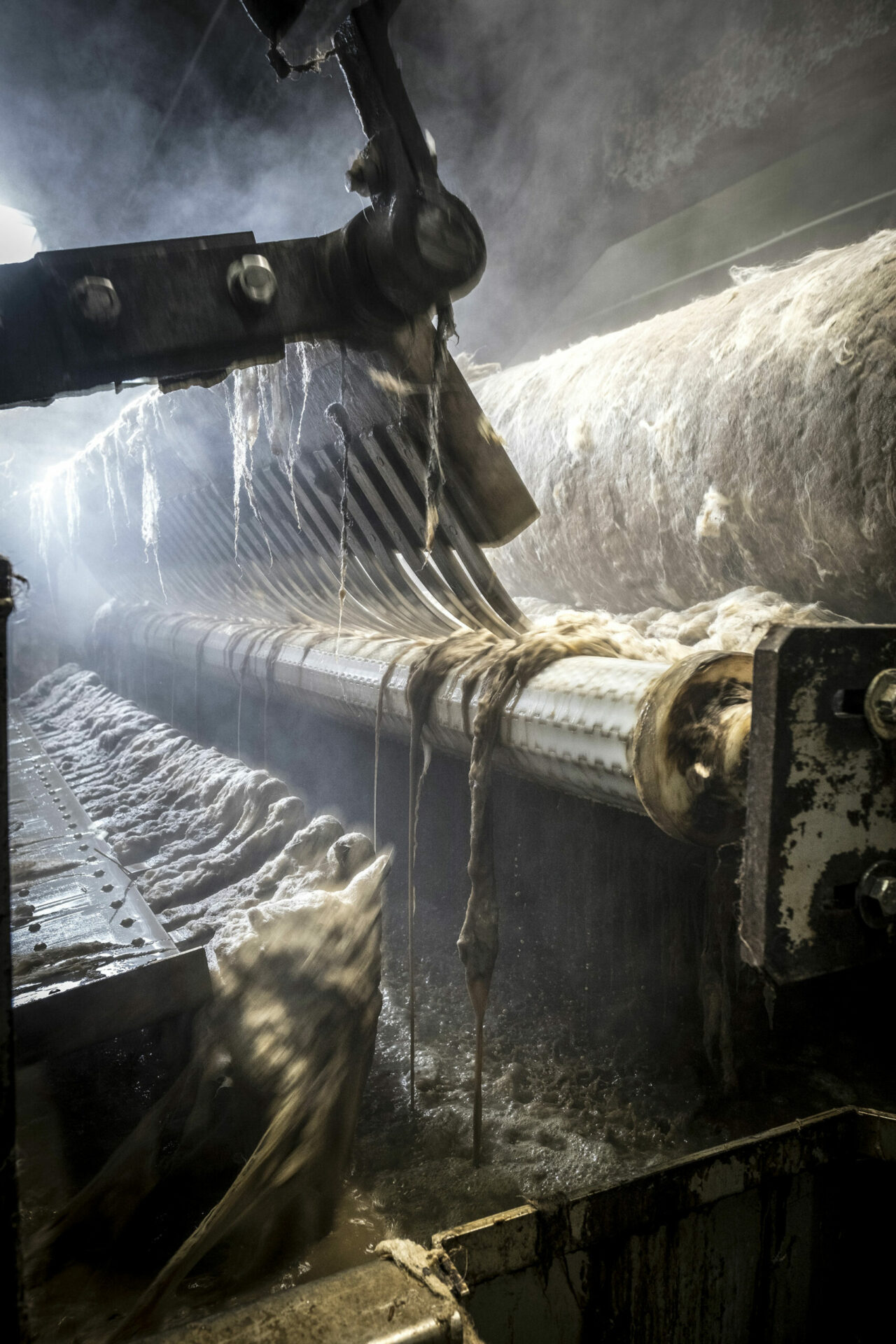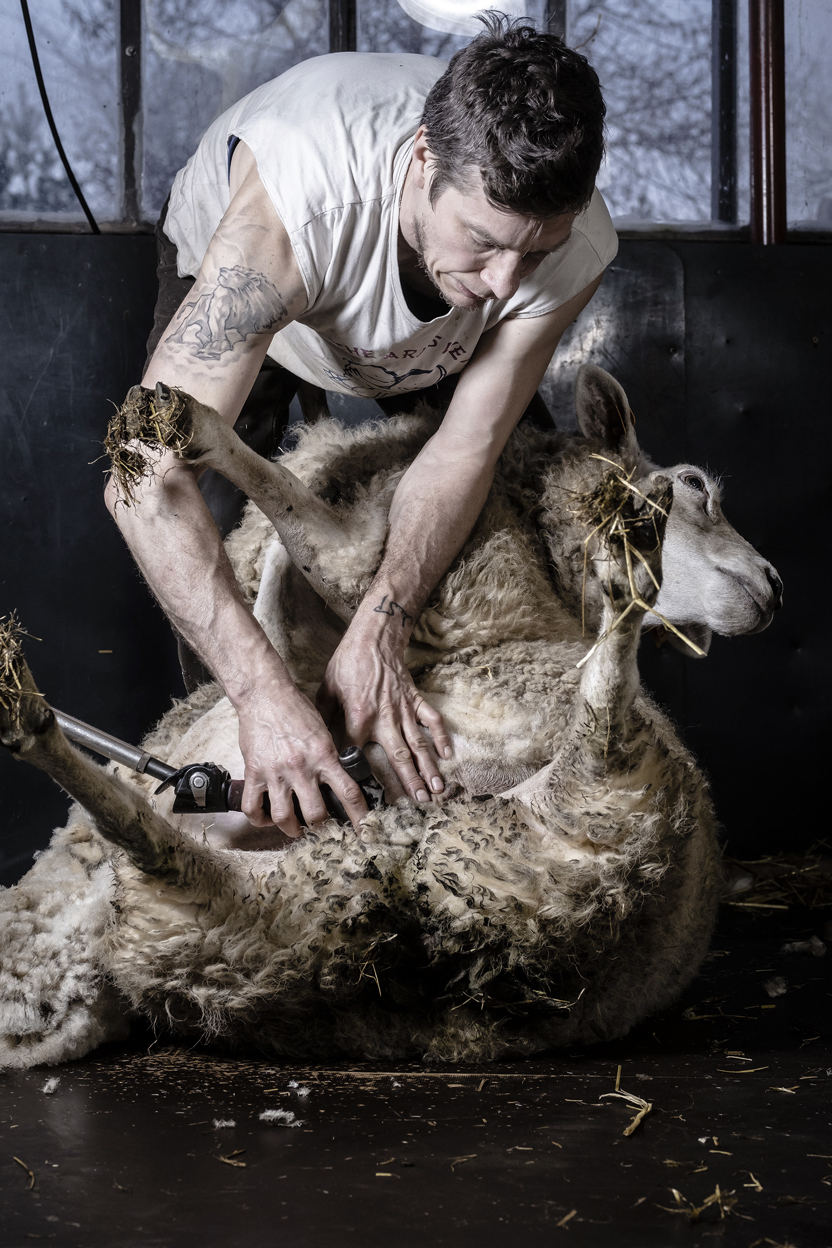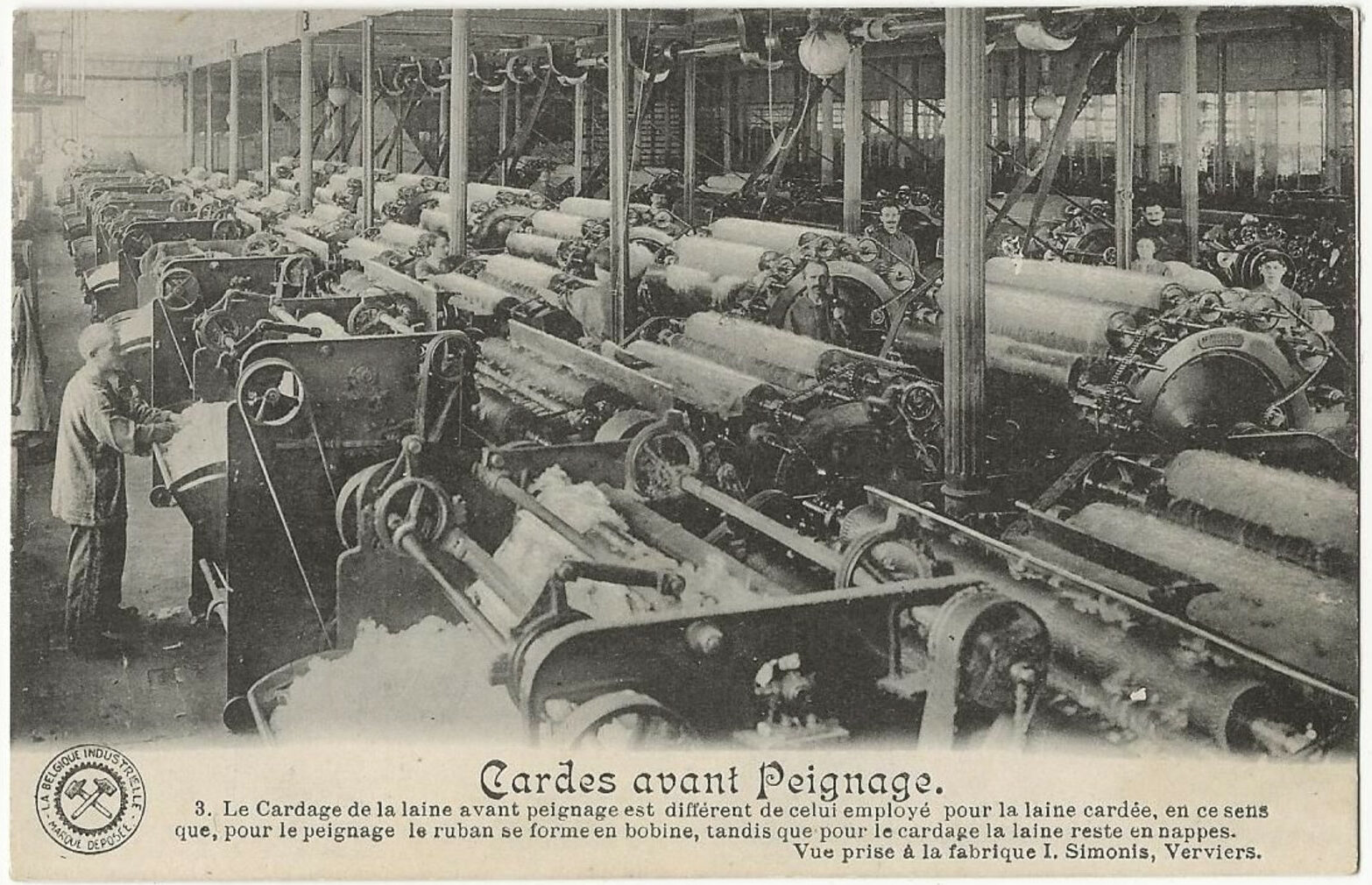A city of wool,
but also innovation
The industrialisation of textiles in Verviers was in the early days largely based on imitating British innovations. Local wool workers and mechanics then invented and perfected their sector. Unfortunately, this modernisation of the sector was not able to prevent its slow decline during the 20th century.
.
Let’s travel back three centuries to Verviers in 1709. While Ghent, for example, was already home to 50,000 people, Verviers only had a population of around 5,500. It became a town in 1651 following the expansion of the wool industry, thanks to the lack of corporate regulations and the presence of an easily accessible waterway at the flat bottom of the valley. The wool industry was at the heart of the incredible commercial boom and world renown of this town on the banks of the Vesdre. The quality of the river’s water, combined with the expertise of the artisans in Verviers, gave the wool an incomparable feel and quality. The wool industry benefited from early mechanisation with the appearance of the first steam engines in 1816, followed by the first spinning machines on the continent, which were installed here by the famous industrialist William Cockerill. After World War II, wool farming gradually experienced an inevitable decline. Today, Verviers’ glorious industrial past can still be seen in large and beautiful mansions, and is also evident in various public buildings that attest to the incredible boom of the 19th century.



A sector in need
of revitalisation.
Verviers was one of the largest hubs for wool in the world from the 17th century until the 1930s. After World War I, this small town in eastern Belgium became the world capital of wool, alongside Bradford in England. Thanks to extremely rapid industrialisation, this modest town, whose historical roots only date back to the 16th century, was covered with fulling mills, spinning mills and other draperies and the town experienced exceptional growth, thanks to the ‘benevolence’ of a few families of industrialists. In the period between the two world wars, business dwindled, with the 1950s marking the final decline of textile production in Verviers and the beginning of a long period of economic hardship. For fifteen years, the town of 55,000 residents has been trying to showcase a new side of itself as a city and cultural centre, forgetting its industrial hardship and instead highlighting the most glorious and prosperous aspects of its wool heritage.

Downloads
Technical sheets
Installation instructions
Certifications
Images
Follow us
© Woolconcept. All Rights Reserved.
Downloads
Technical sheets
Installation instructions
Certifications
Images
Follow us
© Woolconcept. All Rights Reserved.